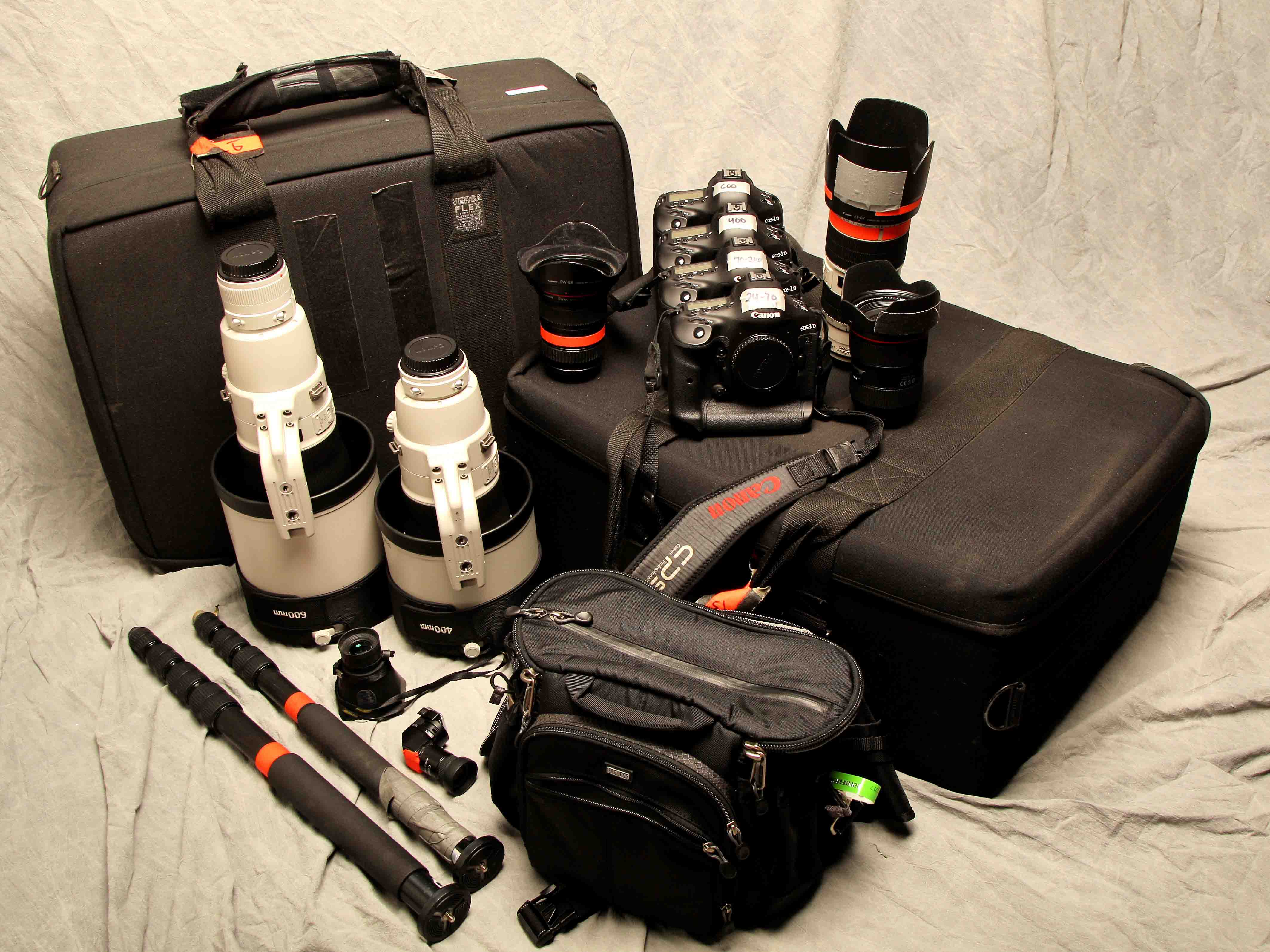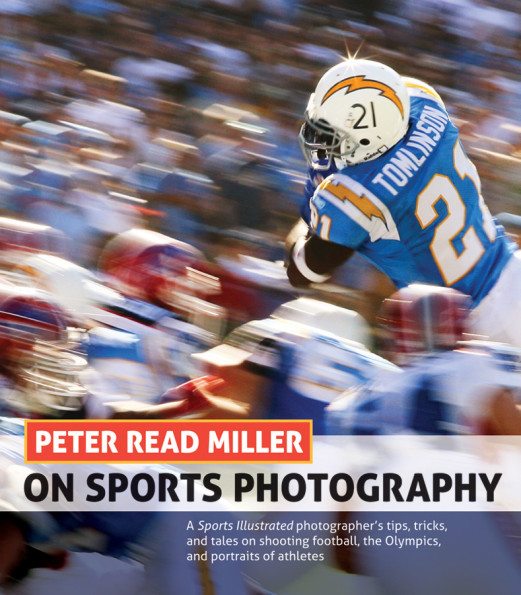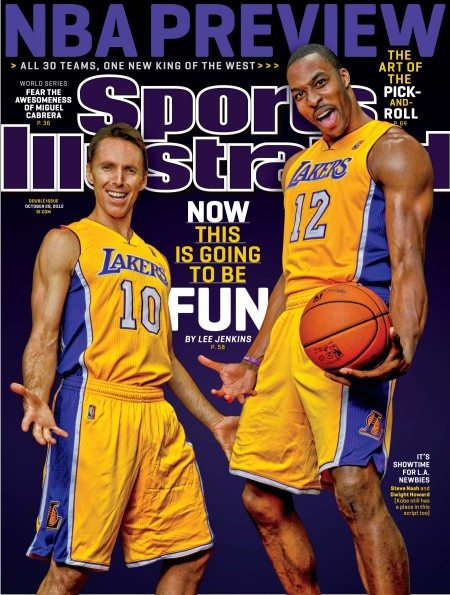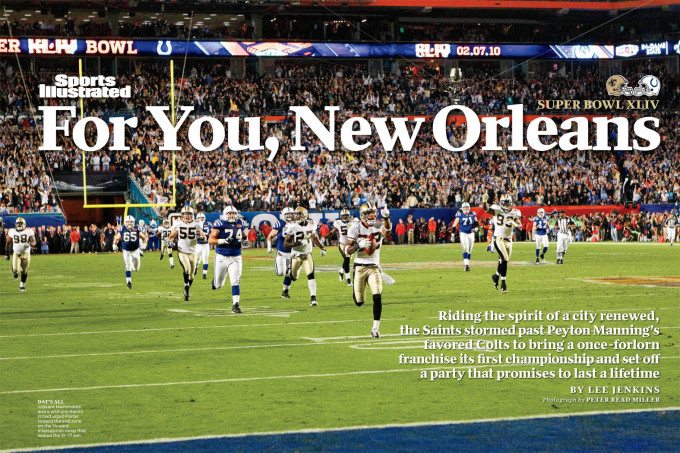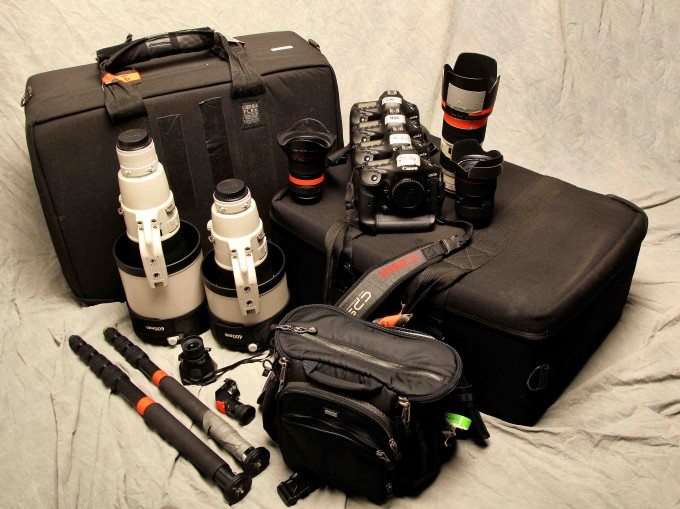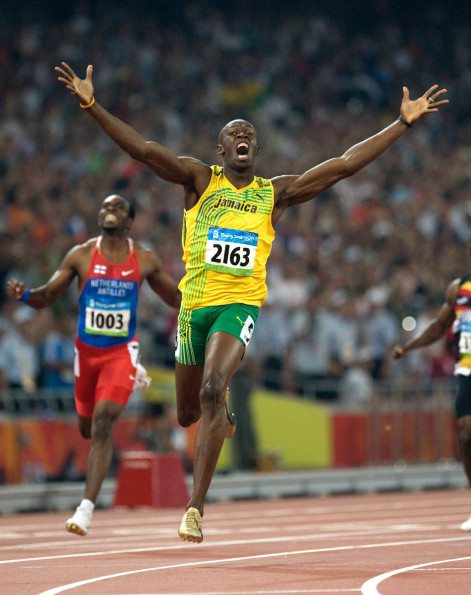Last Updated on 02/01/2013 by Chris Gampat
Super Bowl 2013 is approaching very soon, and while there may be tensions with fans we can only imagine how much stress the photographers are under to nail that cover shot for their publication. Peter Read Miller knows this song all too well, and he has been covering the game for many years. His gear bag has evolved and his photographic eye has also become more fine tuned after each touchdown.
We spent a bit of time talking to Peter about shooting the game, his new photography book, and his gear bag.
Phoblographer: How did you get into photography?
Peter: I started photography as a hobby in high school after my grandmother gave me a camera. I continued through college (University of Southern California) and grad school (University of Pennsylvania) working on the school papers and yearbooks. I quit grad school after a year to spend some time road-managing a friend’s band. After that, I started shooting for the USC athletic department then NFL Properties, ABC Sports and eventually Sports Illustrated.
Phoblographer: What attracted you to sports photography?
Peter: Photographing sports and athletes provides a number of unique challenges. Capturing a moment and communicating the power, skill and grace of a sport is one. Another is portraying the spirit and personality of an athlete. I have been very fortunate during my career at Sports Illustrated to not only cover a broad spectrum of sporting events, but also to photograph numerous athletes in portrait settings both on location and in the studio.
Phoblographer: You’ve shot 8 Olympic games, 34 Super Bowls, and 14 NBA finals. What year was your favorite or most memorable?
Peter: Hard to say–so many amazing moments. The 1984 Olympics was my first and in my home town no less. Super Bowl XXIII, the 49er’s defeat the Bengals on a late Joe Montana lead drive, my first Super Bowl cover of SI. In the 1982 NBA Finals, the Lakers go into Philly and close out the 76ers with Kareem at home injured and Magic Johnson starting at center. The 2008 Olympics in Bejing, Usan Bolt goes wild after breaking the world record in the 200 meters.
Phoblographer: So whats it like specifically shooting the Super Bowl for Sports Illustrated over other sporting events?
Peter: As important as the Super Bowl is to the players, the league, and millions of fans, to a photographer it’s just another game—or it should be.
However, it’s more crowded (sometimes), has annoying security (always), and places more pressure on you to perform because you’re shooting with the cream of the crop of sports photographers (of course). Although some Super Bowls have been exciting games with thrilling finishes (Super Bowls XIII, XXII, and XLII), many have not (Super Bowls XX, XXIV, and XXXV). But to a photographer, the task remains the same—shoot key players and big plays. With every game since XXXII played indoors or at night, finding good light is no longer a factor.
Sports Illustrated uses 11 photographers to cover the Super Bowl. One shooter roams on each sideline, four shooters head to the end zones (one on each side of each end zone), and four more are in seats as close as possible to each corner of each end zone. At some time in the early fall, Steve Fine-SI’s Director of Photography attends a “walk through” at the host stadium to select the seats. It’s a tricky business because equipment like boom cameras—and entire stages—tend to appear at game time that were never mentioned in any NFL game plan. .
The eleventh photographer spot is the “eye in the sky” overhead spot. This position is usually at or near mid-field and is seemingly higher every year. It requires someone with a triathlete’s lung capacity to retrieve memory cards, and it’s not glamorous. But once in a while something happens in the game that no one at field level has a clear shot at. That’s position can save the day.
Depending on the stadium, we may use a few situational add-on photographers. If it’s physically possible (and security allows it) for someone to actually be over the field in an indoor stadium that has catwalks (Phoenix, for example), we’ll position a photographer up on these walkways. This year in New Orleans we will have remote cameras in the catwalks.
So everyone has a designated spot from which to shoot. Mine is almost always in the end zone on the side of the QB’s throwing arm. With the Flex system, the Super Bowl becomes a game of what comes your way or what doesn’t. You’re covering the game, sure, but from one particular spot. What are the rules? There are only two of them: Don’t miss anything that comes your way, and don’t leave your spot. Well, we all know that rules are made to be broken. I broke them once in Super Bowl XXX and my photo made the cover, and then I broke them again in Super Bowl XXXVI and missed one of the biggest plays of the game. You break these rules at your own peril.
Phoblographer: What’s in your gear bag right now?
Peter: When I shoot a football game I don’t really have a “gear bag”. For an out of town game I pack my gear in 2 Versaflex cases and hopefully FedEx them to my hotel or to my assistant. Going into a stadium I try not to take any gear I’m not going to use while I am shooting the game. Everything is basically set up when I go into the stadium.
Here’s what I use when I cover a football game:
- 4-Canon EOS 1D X bodies-Far and away Canon’s best ever pro DSLR. Honestly, I think this camera is best in the field right now. Beautiful files, super fast AF and stunning high ISO.
- 600mm f/4 Series II Canon Lens
- 400mm f/2.8 Series II Canon Lens (The new Series II Canon teles are the sharpest, fastest focusing and lightest long lenses I have ever used)
- 70-200mm f/2.8 Series II Canon Lens a great go-to lens for almost any sport. I never leave home without it.
- 24-70 f/2.8 Series II Canon Lens The new version of this lens is sharpest mid range zoom in Canon’s line-up
- 16-35 f/2.8 Series II Canon Lens
- The 400 and 600 lenses are on Gitzo Carbon Fiber Monopods; the 70-200 over my shoulder; the 24-70 around my neck; and the 16-35 is in a Think Tank “Speed Freak” belt/shoulder poucAlso around my neck is a Hoodman HoodLoupe (very helpful for checking critical focus especially on a bright sunny day). In addition, I have a Canon “Angle Finder C” in my pocket for low angle shots. I shoot on Hoodman and Lexar 1000X 16 and 32 GB cards. My carry on bags are a Think Tank Urban Disguise 60 and the Think Tank Airport Security Roller.
When I shoot portraits I use the EOS 1D X usually with the 24-70 f/2.8 Series II or the 70-200 f2.8 Series II. I use Dynalite SP1600 Power Packs with Dynalite SH4080 lampheads. My primary light modifier these days is the Rimelite Grand GSB91 parabolic softbox.
Computer wise I travel with a MacBook Air, Lexar and Hoodman USB3 card readers and a Western Digital Passport external hard drive that I use to back up all my shoots.
Phoblographer: Tell us a bit about your workshop that you’ve got coming up?
Peter: I will be teaching my sports photography workshop in Denver April 8-14 for the eleventh year. Students will be shooting sports every afternoon and evening. In past workshops shoots have included mountain biking, baseball, lacrosse, track and field, roller derby, boxing, soccer and football. The mornings will feature evaluation of student work and guest lecturers including Steve Fine, Director of Photography at Sports Illustrated and Syl Arena best selling author of the “Speedlighters Handbook”. Sponsors include Canon, Western Digital, Dynalite, Think Tank and Hoodman. For more information check my website.
Phoblographer: We hear your working on a new book. What’s it all about?
Peter: The book, Peter Read Miller on Sports Photography, features photographs from my 40 years as a sports shooter and the stories behind them. I am very much looking forward to it hitting the shelves.
Phoblographer: We’ve got some parents that love shooting their kids playing sports. Based on your history of shooting since before I was born, what are three tips that you can give to an advanced amateur crowd?
Peter: Shoot as low as possible-kneeing or lower. The low angle makes any athlete look more heroic.
Watch your backgrounds–try to avoid cars, chainlike fences and people in lawn chairs.
The more you know about what is going to happen in the game and what specific players are likely to do the better your pictures. Try to learn as much as possible about the game, your team, your players and the opposition.
Please Support The Phoblographer
We love to bring you guys the latest and greatest news and gear related stuff. However, we can’t keep doing that unless we have your continued support. If you would like to purchase any of the items mentioned, please do so by clicking our links first and then purchasing the items as we then get a small portion of the sale to help run the website.


